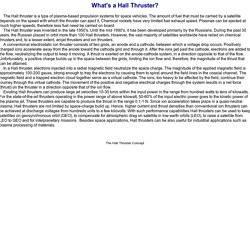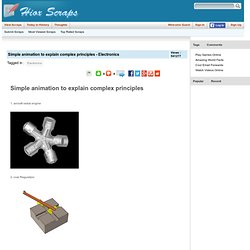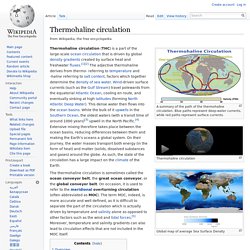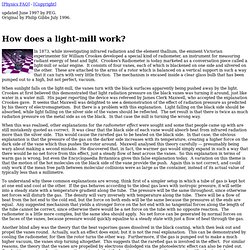

Biology. Computers. Tools and Methods. Best Series and Collections of Explanations from Across the Web. NERF Blaster: Air Restriction Mechanism. How speakers make sound - Animagraffs. Speakers (also called loudspeakers) push and pull surrounding air molecules in waves that the human ear interprets as sound.

You could even say that hearing is movement detection. So what makes a speaker travel back and forth at just the right rate and distance, and how does that make sound? Our 3D animated infographics attract thousands of viewers. We'd love to work with you. Let's chat. An Intuitive Guide To Exponential Functions & e. E has always bothered me — not the letter, but the mathematical constant.

What does it really mean? The mathematical constant e is the base of the natural logarithm. And when you look up natural logarithm you get: The natural logarithm, formerly known as the hyperbolic logarithm, is the logarithm to the base e, where e is an irrational constant approximately equal to 2.718281828459. Nice circular reference there.
I’m not picking on Wikipedia — many math explanations are dry and formal in their quest for rigor. No more! E is NOT Just a Number Describing e as “a constant approximately 2.71828…” is like calling pi “an irrational number, approximately equal to 3.1415…”. Pi is the ratio between circumference and diameter shared by all circles. E shows up whenever systems grow exponentially and continuously: population, radioactive decay, interest calculations, and more. Understanding Exponential Growth Let start by looking at a basic system that doubles after an amount of time. 15 Secretly Brilliant Reasons Stuff is Designed That Way. What's a Hall Thruster? What's a Hall Thruster?

The Hall thruster is a type of plasma-based propulsion systems for space vehicles. The amount of fuel that must be carried by a satellite depends on the speed with which the thruster can eject it. Chemical rockets have very limited fuel exhaust speed. Plasmas can be ejected at much higher speeds, therefore less fuel need be carried on board. The Hall thruster was invented in the late 1950's. A conventional electrostatic ion thruster consists of two grids, an anode and a cathode, between which a voltage drop occurs. In a Hall thruster, electrons injected into a radial magnetic field neutralize the space charge. Existing Hall thrusters can produce large jet velocities 10-30 km/s within the input power in the range from hundred watts to tens of kilowatts.
What is Concrete? The Invisible Gas Floating This Boat Might Get Injected In Your Eye. What Happens After You Flush? How an atomic clock works, and its use in the global positioning system (GPS) Converting to Metric. Optics Channel - HowStuffWorks. How a sewing machine works : interestingasfuck. Simple animation to explain complex principles. 1, aircraft radial engine 2, oval Regulation 3, sewing machines 4, Malta Cross movement - second hand movement used to control the clock 5, auto change file mechanism 6, auto constant velocity universal joint 6.gif 7, gun ammunition loading system 8 rotary engine - an internal combustion engine, the heat rather than the piston movement into rotary movement # Via World Of Technology.

The Way Things Work. The New Way Things Work[edit] A newer version, The New Way Things Work, released on October 26, 1998, contains additional text on the workings of computers and digital technology.

It also lacks two pages from the first edition; one page demonstrated the working of a mechanical coin-operated parking meter. What's The Best Demonstration Of A Scientific Concept You've Ever Seen? Why The Full Moon is Better in Winter. Dynamic Earth Excerpt: Viz Challenge Winner. Thermohaline circulation. A summary of the path of the thermohaline circulation.

Blue paths represent deep-water currents, while red paths represent surface currents. Global map of average Sea Surface Density The thermohaline circulation is sometimes called the ocean conveyor belt, the great ocean conveyor, or the global conveyor belt. On occasion, it is used to refer to the meridional overturning circulation (often abbreviated as MOC). The term MOC, indeed, is more accurate and well defined, as it is difficult to separate the part of the circulation which is actually driven by temperature and salinity alone as opposed to other factors such as the wind and tidal forces.[5] Moreover, temperature and salinity gradients can also lead to circulation effects that are not included in the MOC itself. Overview[edit] How does a light-mill work? [Physics FAQ] - [Copyright] updated June 1997 by PEG.

Original by Philip Gibbs July 1996. In 1873, while investigating infrared radiation and the element thallium, the eminent Victorian experimenter Sir William Crookes developed a special kind of radiometer, an instrument for measuring radiant energy of heat and light. Crookes's Radiometer is today marketed as a conversation piece called a light-mill or solar engine. It consists of four vanes, each of which is blackened on one side and silvered on the other. When sunlight falls on the light-mill, the vanes turn with the black surfaces apparently being pushed away by the light.
When this was realised, other explanations for the radiometer effect were sought and some that people came up with are still mistakenly quoted as correct. To understand why these common explanations are wrong, think first of a simpler setup in which a tube of gas is kept hot at one end and cool at the other. Ftp/arxiv/papers/0906/0906.3884.pdf.